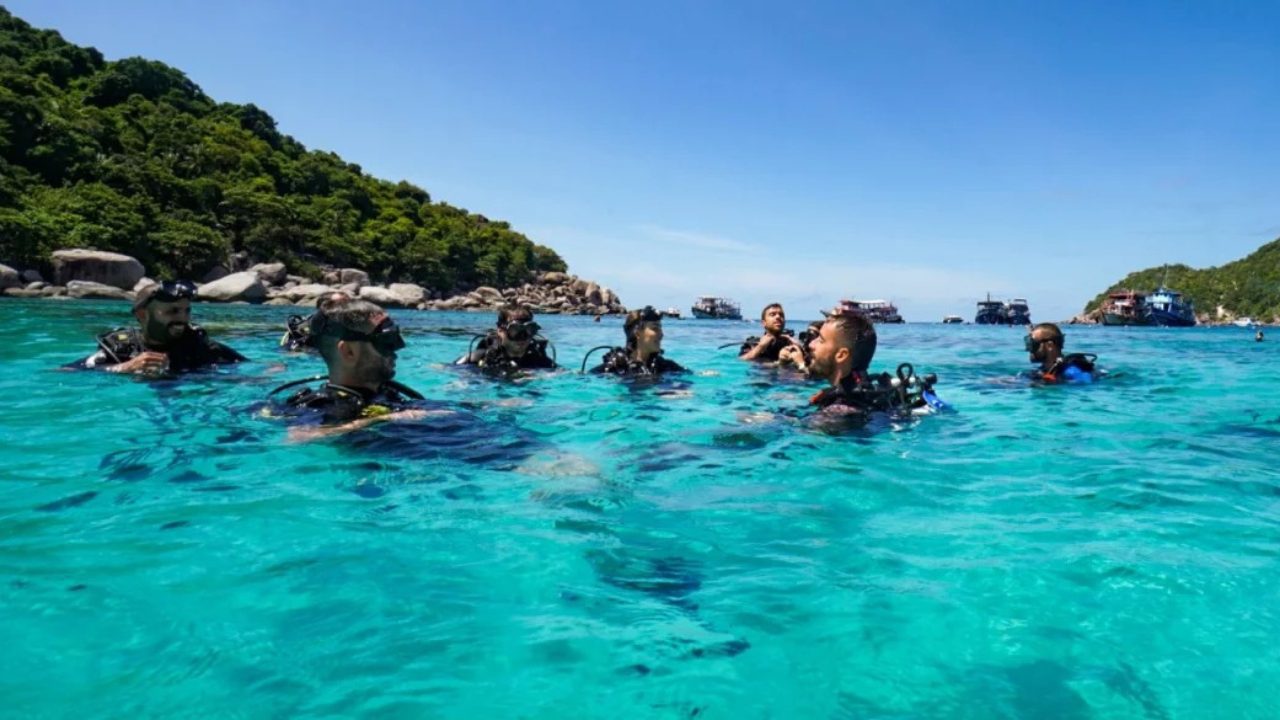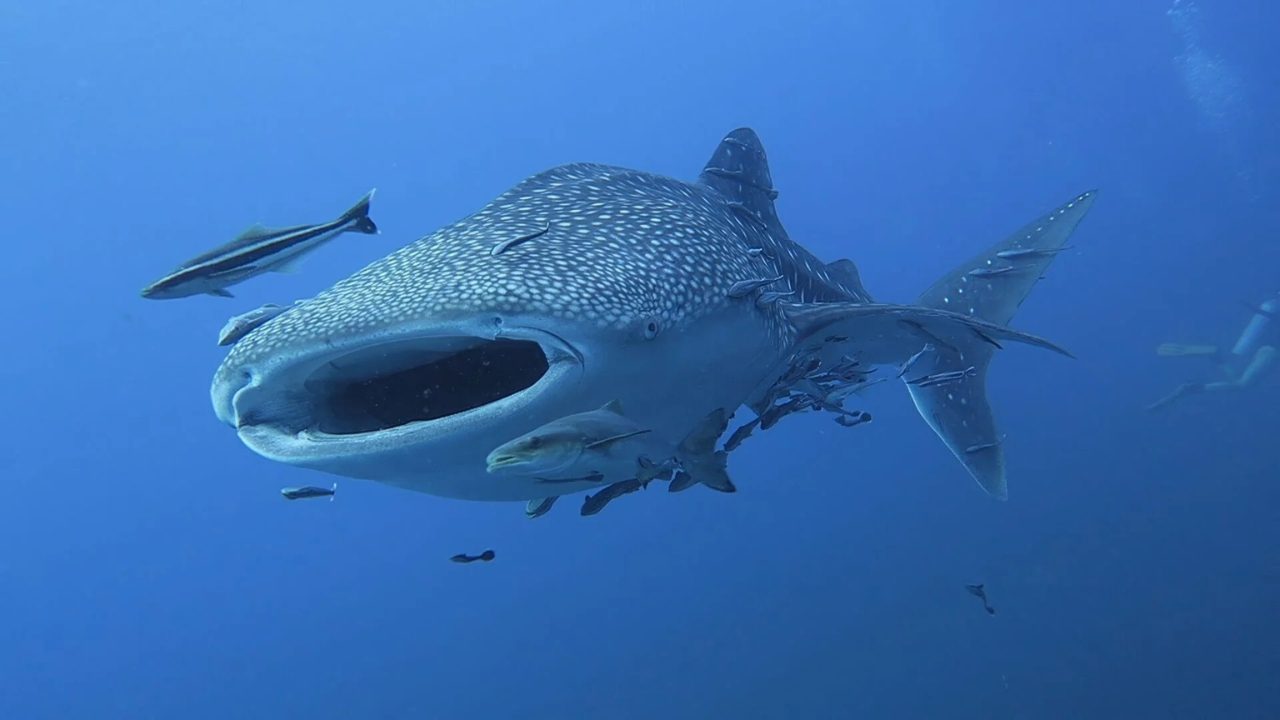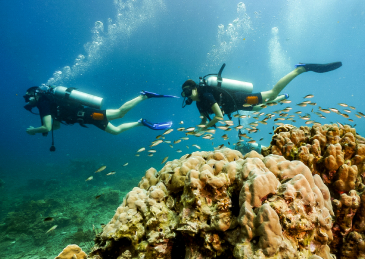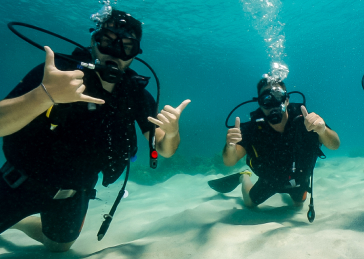Modified 13th June 2025
Best Time To Dive Koh Tao: Your Complete Seasonal Diving Guide
Determining the best time to dive Koh Tao significantly impacts your underwater adventure on Thailand’s premier diving destination. This tropical paradise in the Gulf of Thailand experiences distinct seasonal patterns that affect visibility, marine life encounters, and overall diving conditions. Understanding these patterns helps you plan the perfect journey to Koh Tao for your diving goals.
Whether you’re seeking optimal diving conditions for your certification, hoping for whale shark encounters, or looking for budget-friendly options, timing your visit strategically can transform your diving experience from good to extraordinary. Understanding Koh Tao’s weather patterns is essential for planning the perfect diving adventure.

Seasonal Overview: When to Visit Turtle Island
Koh Tao Diving Calendar
| Season | Months | Visibility | Sea Conditions | Water Temp | Marine Life |
|---|---|---|---|---|---|
| Hot Season | Mar – Sep | 20-30m | Calm & Clear | 28-30°C | Excellent |
| Whale Shark Season | Mar-Apr, Sep-Oct | 15-25m | Good | 28-29°C | Peak Encounters |
| Shoulder Season | Feb, Oct-Nov | 10-20m | Variable | 26-28°C | Good |
| Monsoon Season | Nov – Jan | 5-15m | Changeable | 26-27°C | Variable |
Hot Season: The Golden Window (March-September)
The best time to dive Koh Tao occurs during this extended hot season, when the island showcases its underwater magnificence at its finest. Koh Tao’s reputation as a world-class diving destination was built on the consistent conditions experienced during these months.
✓ Advantages
- Exceptional 25-30m visibility
- Calm, glass-like seas
- Consistent weather patterns
- Perfect 28-30°C water temperature
- Prime whale shark season
⚠ Considerations
- Higher accommodation costs
- More crowded dive sites
- Advanced booking required
- Peak pricing periods
✓ Advantages
- Steady 20-25m visibility
- Reliable diving schedule
- Warm water temperatures
- Excellent for training courses
- Great marine life diversity
⚠ Considerations
- European summer crowds
- Higher overall costs
- Limited last-minute availability
- Busy sitio de buceo schedules

Marine Life Seasonal Patterns
When to Spot Koh Tao’s Marine Residents
Understanding seasonal marine life patterns helps you plan encounters with specific species during the best time to dive Koh Tao for your interests.
Visibility Throughout the Year
Monthly Visibility Ranges
Budget-Friendly Alternatives
While hot season offers the best time to dive Koh Tao for optimal conditions, budget-conscious divers can find excellent value during shoulder seasons without completely sacrificing the diving experience.
February: The Hidden Gem
February often surprises visitors as one of the best times to dive Koh Tao for value seekers. As the island emerges from monsoon season, reefs appear refreshed and marine life becomes increasingly active. Visibility typically ranges from 15-20 meters, while accommodation costs drop significantly from peak season rates.
October-November: Transition Period Benefits
The transition into monsoon season offers another excellent window for budget diving. Early October often maintains good visibility and calm conditions, while late October through November provides opportunities for unique marine encounters as changing conditions attract different species.
Monsoon Season Reality (November-January)
While traditionally considered the challenging period, monsoon season still offers diving opportunities for flexible travelers. The rich marine ecosystem of Koh Tao continues to thrive during these months, though with more variable conditions.
Eastern dive sites often remain accessible when western locations experience rougher conditions, and the reduced number of divers creates opportunities for more intimate underwater encounters. Advanced divers particularly appreciate the challenge and rewards of diving during this period.
Whatever season you choose to visit, La Bombona Diving ensures exceptional underwater experiences year-round!
Our experienced team knows exactly when and where to dive based on current conditions, maximizing your chances of incredible encounters regardless of the season.
- Expert local knowledge of seasonal conditions
- Flexible scheduling around weather patterns
- Access to all dive sites year-round
- Experienced guides who know the best seasonal spots
- Modern equipment suitable for all conditions
- Small group sizes for personalized attention
- Multiple certification levels available
- Comprehensive safety protocols for all seasons
Open Water Certification: ฿11,000 – Perfect for any season
Start Your Diving Adventure4 ocean dives over 4 days | All equipment included | Year-round availability
Preguntas frecuentes
Bucea con LBD: tu puerta a la exploración submarina
Whether you’re a curious beginner or a seasoned pro, our school is your portal to the wonders of scuba diving. Join us into the world beneath the waves.
¿LISTO PARA EMPEZAR?
Consulta nuestros cursos de buceo en Koh Tao



